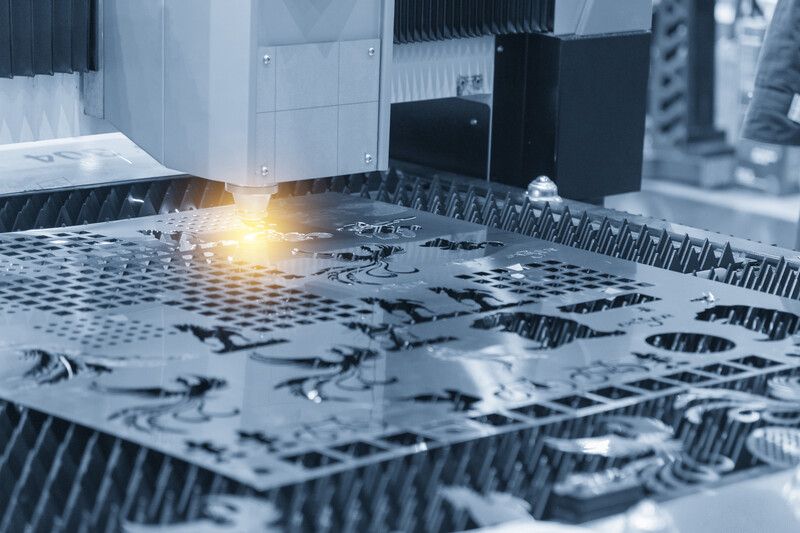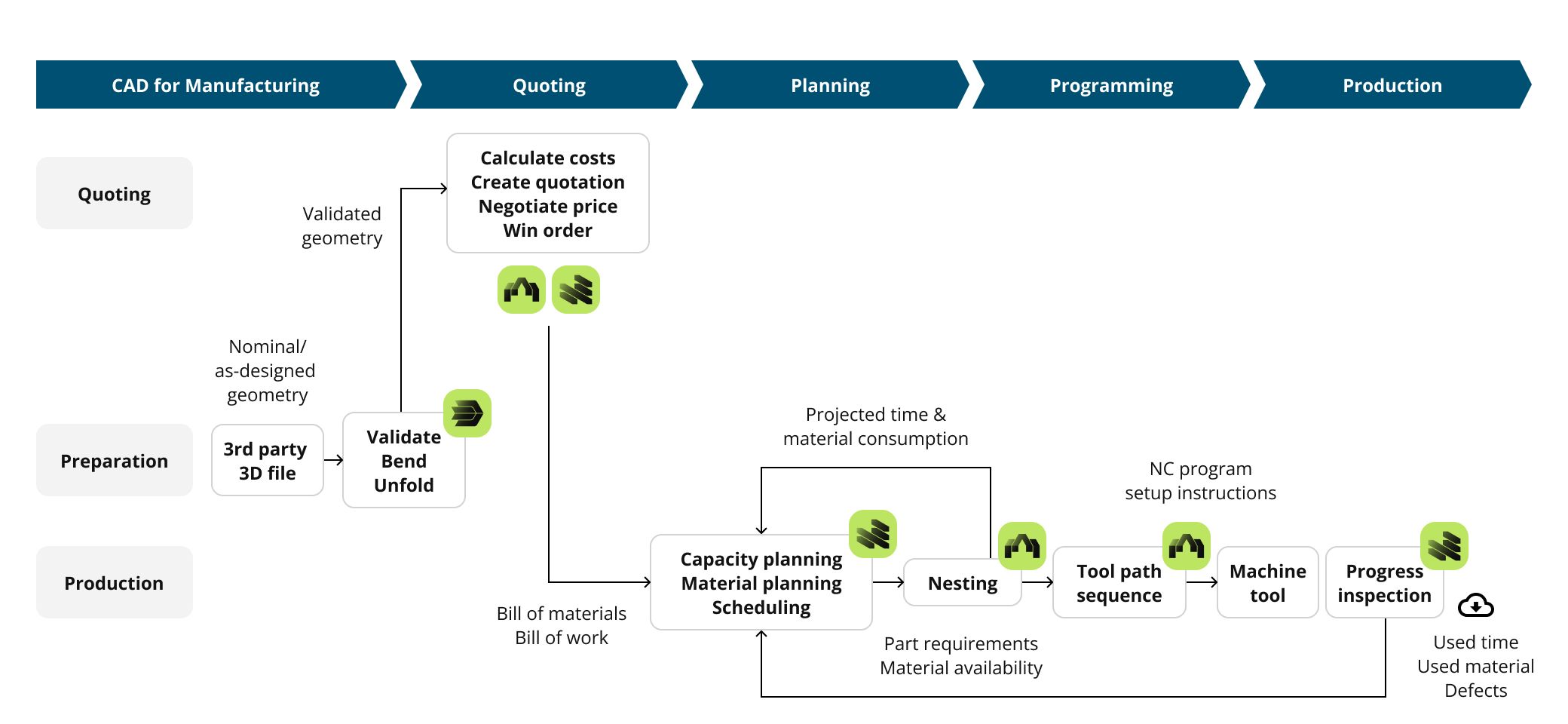Following an upgrade to Nexus on 30 September 2025, you will be required to reset your password during your first login to access Nexus. This process is initiated by selecting the ‘Forgot Password’ option on the login screen.
Computer-aided sheet metal fabrication
Computer-aided manufacturing of sheet metal parts on punching, profiling and bending machines, seamlessly embedded into the management of the manufacturing project from inquiry to delivery.

Sheet metal fabrication involves the design and manufacturing of sheet metal components and assemblies. Sheet metal parts are often manufactured by machine shops that serve various industry verticals. Customers applying time and cost pressures result in a number of key challenges for sheet metal machine shops. These include:
- Eliminating costly prototyping by digitally simulating the bending process
- Optimizing raw material sheet utilization to save on raw material cost and therefore overall product cost
- Optimizing the manufacturing cycle time, improving process stability and reliability, and reducing the resulting machining cost
- Ensuring smooth execution of manufacturing activities to meet the delivery date to the end customer
Reduce manufacturing cost with superior nesting algorithms and ensure smooth and fast manufacturing with toolpaths validated virtually without the need for costly prototypes

Our approach
Quoting
Hexagon’s WORKPLAN manufacturing project management software is used to manage the workflow across the entire manufacturing project, starting with the product inquiry. In order to create a quotation for an opportunity, WORKPLAN interfaces with RADAN Radquote. Radquote performs specialist cost calculations for cutting and bending operations, accounting for material usage, manufacturing cycle times, and handling times. The costing details calculated in Radquote are imported into WORKPLAN where a quotation is created and sent to the prospect as an e-mail attachment.
CAD for Manufacturing
Once the job is accepted, DESIGNER is used to check the CAD model of the part or assembly to be manufactured for manufacturing feasibility and to optimize it for sheet metal fabrication. Decisions can be made to determine factors like the optimum top face and where to split or join the part. For larger parts, the user can decide where to weld and where to bend the part. Specialized functionality can help determine the ideal corner solutions to optimize the cutting process and minimize subsequent operations such as welding and grinding or polishing. DESIGNER will also check the part for inconsistent material thicknesses and verify that the unfolded blank is complete and free from overlapping flanges.
Programming
RADAN Radbend is used for the offline programming of press brakes for bending. Radbend uses tooling databases to determine the best tooling configurations to minimize setup time and handling. Automatic sequence calculation determines the ideal bending process. A full 3D simulation of the bending process is performed to ensure process stability, and user documentation for the machine operator is created to decrease the risk of handling errors. Performing a digital simulation of the bending process eliminates the need for costly prototypes.
RADAN Radprofile, Radpunch, and Radcombi are used to transform the production requirements -(i.e., the list of parts that are required to be manufactured) - into nests. Highly optimized algorithms automatically create layouts of the parts that ensure that the raw material is used with as little waste as possible, whilst at the same time ensuring optimal process stability. The software then calculates tool paths that make the best use of the kinematics of the machine tool to reduce the cycle times and maximize process safety.
Planning
WORKPLAN is used to schedule a project and its manufacturing jobs based on set priorities and the availability of resources. It supports forward-looking, backward-looking, or period simulations. Using the predicted material requirements and the time estimates provided by RADAN, WORKPLAN automatically schedules all resources required to complete the project. The resources include both machines and staffing resources too.
WORKPLAN also imports the bill of materials from DESIGNER. Using the nesting engine of RADAN, WORKPLANestimates the amount of raw sheet metal required for the project. RFQs and purchase orders for materials are created when required and thensent to the material suppliers.
Production
For the actual execution of the manufacturing job, Radnest analyses the true shape, material, and thickness of all components in a batch, separating and sorting automatically. The result is high utilization, manufacturable nests from sheets, off-cuts, and remnants which delivers substantial savings in material cost and improves machine efficiency. Radnest uses an array of algorithms to make the most of raw materials, producing industry-leading results.
WORKPLAN is used to track the time spent on the manufacturing project and monitor the actual project cost. Any defects are logged in the system and, once the manufacturing job is completed, WORKPLAN creates delivery notes and invoices which are sent to the customer. The financial project data can be exported to a 3rd party accounting software.
In Summary
The solution reduces manufacturing costs with superior nesting algorithms and ensures smooth and fast manufacturing with toolpaths validated virtually without the need for costly prototypes.
Products
© 2025 Hexagon AB and/or its subsidiaries